Last Updated on September 24, 2021
When you turn your key to start your vehicle, you expect everything to turn over. And when it doesn’t you probably jump to the most common culprits, the battery, the starter, or the alternator. But what do you do when all those parts check out?
We’ll dive into some other potential causes like a faulty fuel pump relay. But what is a fuel pump relay, where’s it at, and how do you know if it’s working the way it should? We answered all those questions and more for you here.
By the end, you’ll know if your fuel pump relay is working the way it should. That way you can get your vehicle running again or move onto other potential causes to figure out what’s going on.
What is a Fuel Pump Relay?
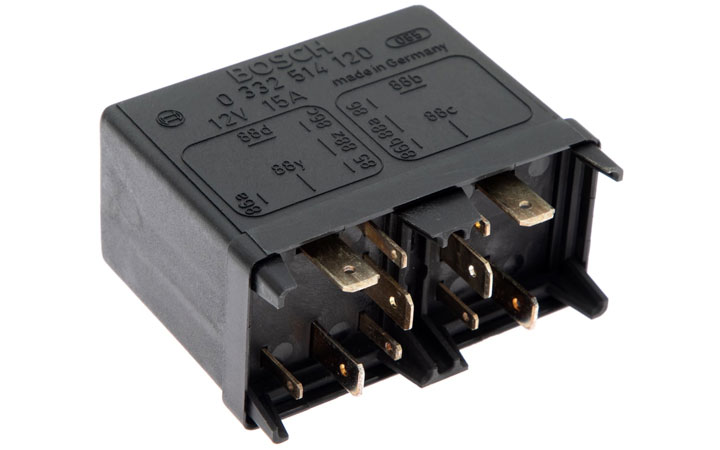
When you turn the key, there’s more going on than you likely realize. One thing that’s happening is that your vehicle’s ECM is sending a signal to the fuel pump to put the right amount of fuel into the combustion chamber to start your engine.
The ECM does this by controlling a relay, the fuel pump relay. When the relay gets enough power, it switches over and sends that power to the fuel pump. When it doesn’t, it switches off and the fuel pump shuts down.
That natural position for the fuel pump is off, which is a good thing otherwise you’d constantly run out of fuel! The fuel pump relay is the gateway between the ECM and the fuel pump, and because of this, it’s a pretty important component!
Fuel Pump Relay Location
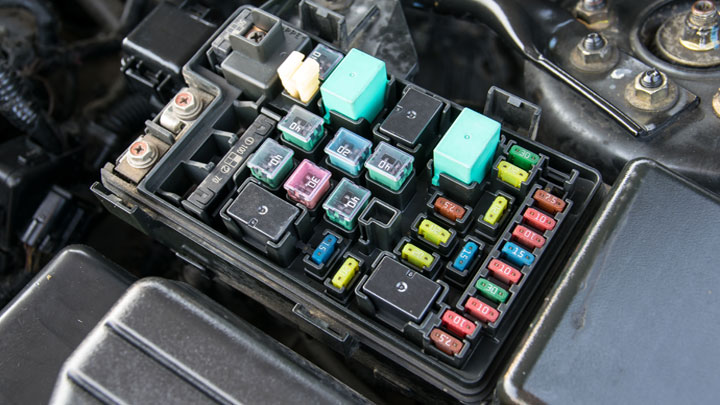
While the exact position of the fuel pump relay can vary depending on what you drive, there are two common locations you should check. Those two locations are either:
- Underneath the hood of your vehicle by the firewall; or
- Underneath the dash on the passenger side of your vehicle
No matter where your fuel pump relay is, you’re looking for the fuse box. The fuse box has a cover, and you’ll need to take it off to find the fuel pump relay. Once you take the cover off, you’re bound to see a few different relays and fuses.
The fuel pump relay won’t have any flashing bright lights telling you what it is, but if you’re lucky, the underside of the fuse box will have a diagram that breaks down what each relay and fuse is.
If your vehicle doesn’t have a diagram on the fuse box, you’ll need to do some research online to try and determine which relay is the fuel pump relay.
Signs of a Faulty Fuel Pump Relay
Before you head out and start swapping relays and ordering new parts, check to see if any of these symptoms match up. If they do, then it’s worth investigating a little bit further.
#1 – You Can’t Start Your Vehicle
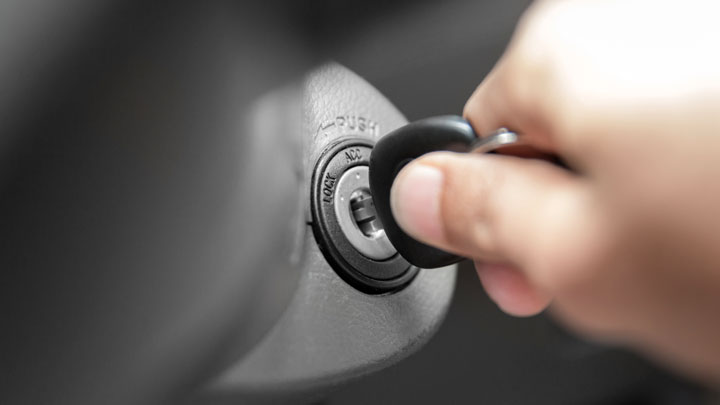
This is by far the most likely symptom of a faulty fuel pump relay, but it’s also one of the most overlooked. People automatically assume it’s either a dead battery or bad starter, but if the combustion chamber doesn’t have any fuel, you’ll never get the engine started!
When you turn on the key, you should hear a click in the fuse box, if you don’t hear it and you can’t start your vehicle, you might have a faulty fuel pump relay.
#2 – Check Engine Light

If your vehicle is starting but it is experiencing mechanical problems, then a check engine light might be your first sign that you have a faulty fuel pump relay. Luckily for you, many engine codes will point you straight to the fuel pump or fuel pump relay.
Always check the relay first, it only takes a few minutes, and it can save you hours of frustration on a more in-depth job.
#3 – Engine Stalling

If your vehicle is stalling out after you get it started, it could be a whole litany of problems, but one possible cause is a faulty fuel pump relay. Because of how easy it is to check, it’s always worth ruling it out early in the troubleshooting process.
#4 – Rough Acceleration
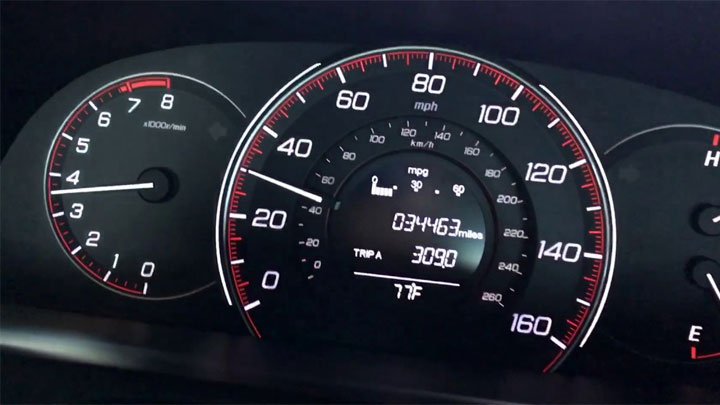
If your vehicle’s fuel pump relay is on the fritz, then you might start to notice some acceleration issues when the fuel pump relay doesn’t kick on and off like it should. This rough acceleration can quickly turn to engine stalls, and eventually you might not be able to start your vehicle at all!
However, it’s important to note that sometimes the fuel pump relay doesn’t break down slowly. One day it might work, and the next, you might not be able to get your vehicle started.
#5 – No Noise From the Fuel Pump

When you’re going to start your vehicle, you should hear your fuel pump kick on as it tries to send fuel to the engine. You might not be able to hear it from the cab of your vehicle, but if you send someone back to the fuel pump, they should hear it kick on.
If they can’t hear it kick on, you either have an electrical malfunction, a faulty fuel pump, or a faulty fuel pump relay. The fuel pump relay is the least expensive and easiest to fix, so that’s what you’re hoping for.
Related: 5 Signs of a Clogged Fuel Filter
What Causes a Fuel Pump Relay to Fail?
While technically a short or other electrical malfunction can cause a fuel pump relay to fail, the most common cause of a broken or damaged fuel pump relay is age. Every time the relay clicks over it wears down just a little bit, and after 100,000, 150,000, or even 200,000 miles, that’s quite a few clicks.
Eventually, it’s just too much for it to handle and it either won’t click over again, or it won’t click back to its original position. It’s completely normal, and as long as it isn’t happening over and over again, there’s nothing you need to do other than replace the relay.
See Also: How Long Do Car Batteries Last?
How to Test a Fuel Pump Relay
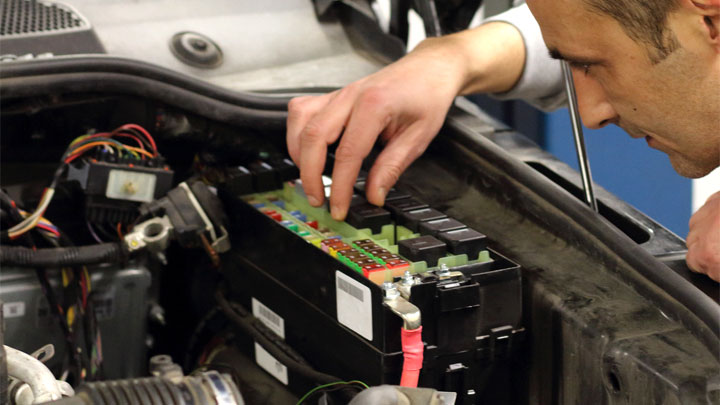
When you’re trying to test a fuel pump relay, there are three easy methods you can do. The first two methods aren’t completely foolproof, but they’ll work 99% of the time and they’re much easier to do.
Method 1 – Swap the Relays
This is probably the easiest way to check the fuel pump relay. When you pull the fuse box cover off, you’ll notice more than one relay there. While they serve different functions, they’re all the exact same.
This means all you need to do to check any individual relay is swap it with another relay! If the problem goes away, then the relay is what’s causing the problem.
However, the one downside to this method is that if you have two faulty relays nothing will change, and you’ll end up chasing your tail for a while. That’s why it’s best to make sure you’re swapping in a brand new relay.
Method 2 – Use a 9 Volt
Once again, this method isn’t foolproof, but it will help you catch the problem 99% of the time. All you need to do to check a relay with a 9-volt battery is remove the relay and connect the positive and negative terminal of the 9-volt to the two studs on the relay and listen for a click.
The 9-volt battery terminals line up, so you shouldn’t need jumper wires or anything, making it a quick and easy test. If the relay is working, correctly then it should click over when you connect the battery and click back when you remove it.
The problem with this test is that your relay doesn’t typically operate off of 9-volts. It’s close enough to troubleshoot almost any relay, but if you have one right on the edge, then you might get a false reading. The chances are slim, but it can happen.
Method 3 – Check Resistance Levels
Using a multimeter is the only 100% foolproof way to check a relay. Relays work through resistance. Once they get enough power, it overcomes the resistance and clicks the relay over. The exact number of Ohms your relay should have can vary some, but it should be somewhere between 50 and 120.
Too few Ohms means your relay is always activated, and too many means it won’t open at all. If the relay displays an open or out limit reading , it means the coil is bad and you’ll need to replace it.
Fuel Pump Relay Replacement Cost
Best places to order parts? See: 19 Best Online Auto Parts Stores
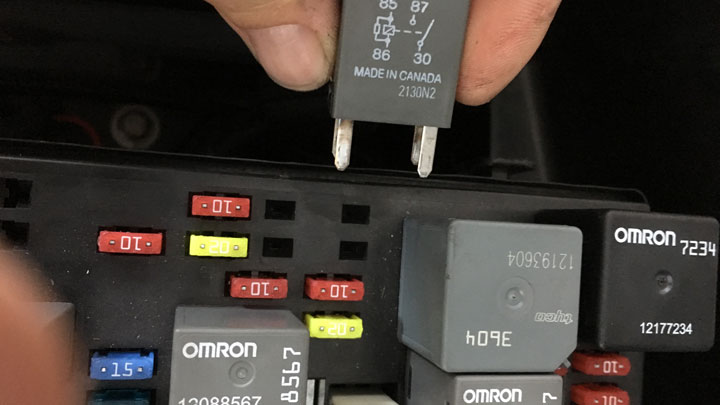
If you’ve narrowed down the problem to your fuel pump relay, there’s really no reason to get a mechanic involved. Swapping the relay is quick and easy, which means all you need to do is purchase the part.
All you need to do is pull out the old relay and push the new one in; it’s really that easy!
An average fuel pump relay only costs about $25, which makes it one of the more affordable parts out there. Just keep in mind that if you take it to a mechanic, they might charge you a full hour’s labor for a 5-minute job, and that can drive your cost up to over $75 depending on their hourly rate!


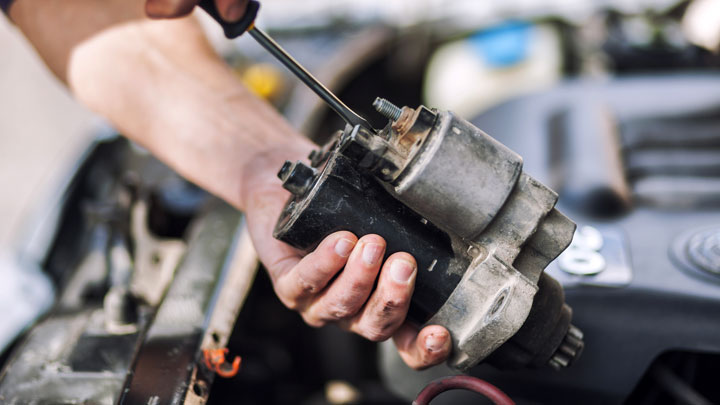
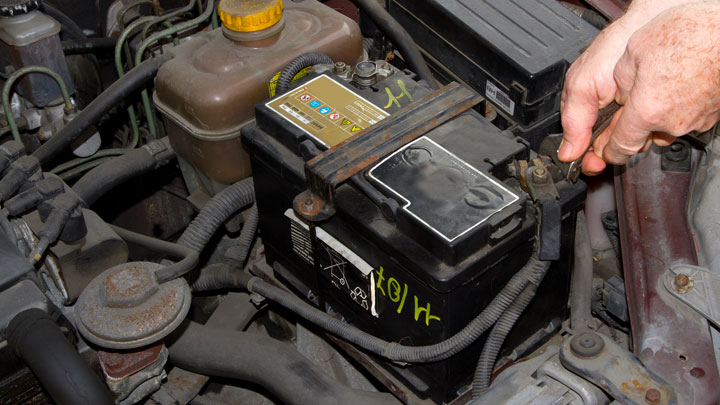
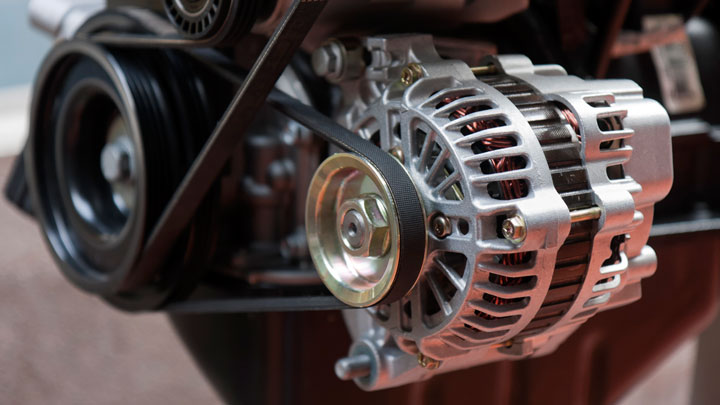
the garage told me first it was the EGR was clogged. Then it was not that but the fuel pump and replaced it(800 EURO). now they say it needs a new engine(3500euro) because it is a dead engine. got stuck. can you explain how that is possible. when ii left it last it looked like it wanted to start after the sudden stall while driivingall went on but no start felt like it needed fuel when ii read your site it is not even mentioned that a whole new engine is needed
I don’t know. It sounds like they might have misdiagnosed the problem the first time, or there was another issue going on at the same time that caused total engine failure.
I have 2006 Nissan Sentra 1.8 I have replace the fuel pump and spark plugs now pump is not priming or starting/getting fuel to engine
Have you verified that the replacement fuel pump is the correct unit for the vehicle?
Also check to make sure all electrical connectors have been reconnected to the new unit.
I have base 2001 audi tt. I replaced the fuel pump,checked all the fuses now when I try to start th car it will start only run for a second or two. I repeat the process with the same result. The only thing I have not checked is the relay which involves removing part of dash. Is there something else that I am missing?
Check for codes, see if there is something obvious that is failing after a couple of seconds. What led you to change the fuel pump in the first place?
When was the last time the fuel filter was replaced? I would go ahead and do that if it’s been a while.
91 Toyota pickup 4×4 circuit opening relay isn’t sending enough power to run the fuel pump all the way I open the relay and cleaned it stuck it back in ran good for about 30 minutes and then started acting like it was running out of gas you could tell that fuel pump was barely running but what really started this is a wire came off of the fuel pump and made a spark the power wire
Are you saying there was a short in the system that caused the fuel pump issue?